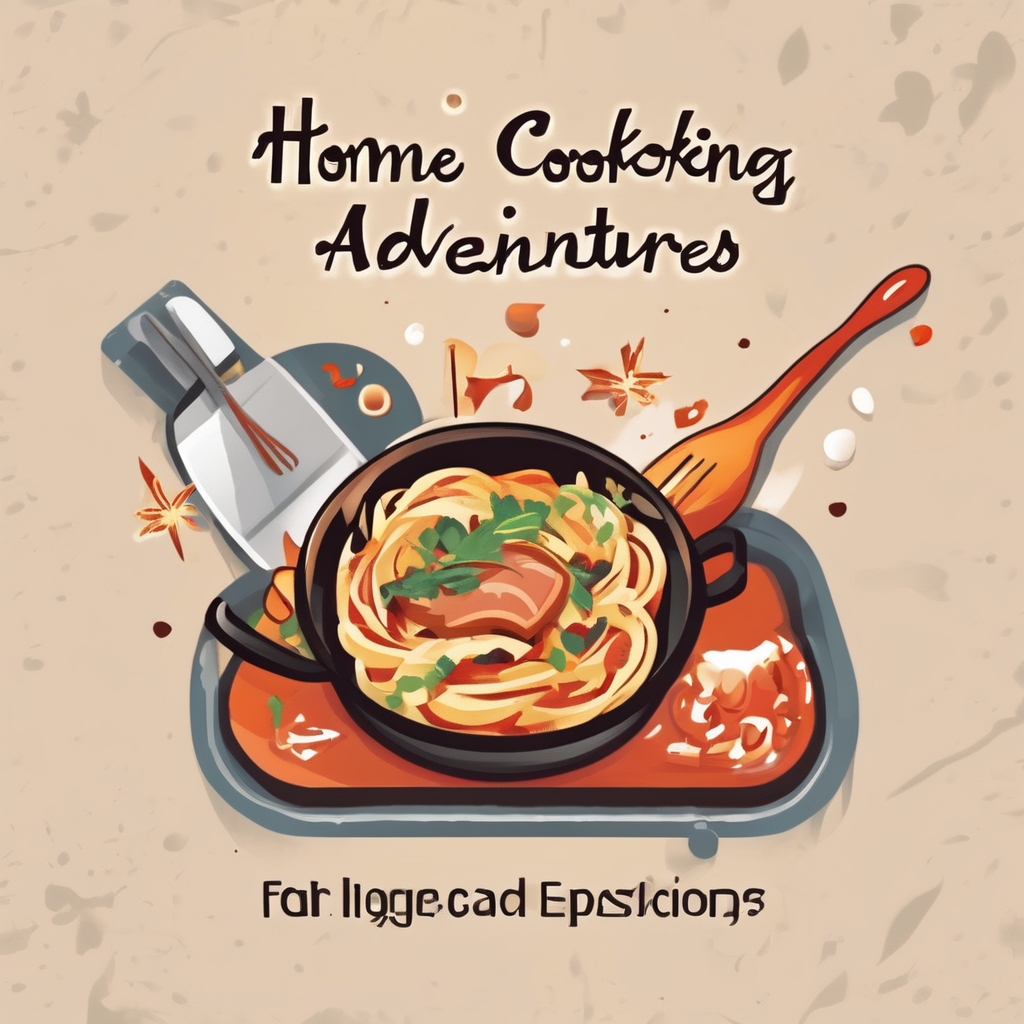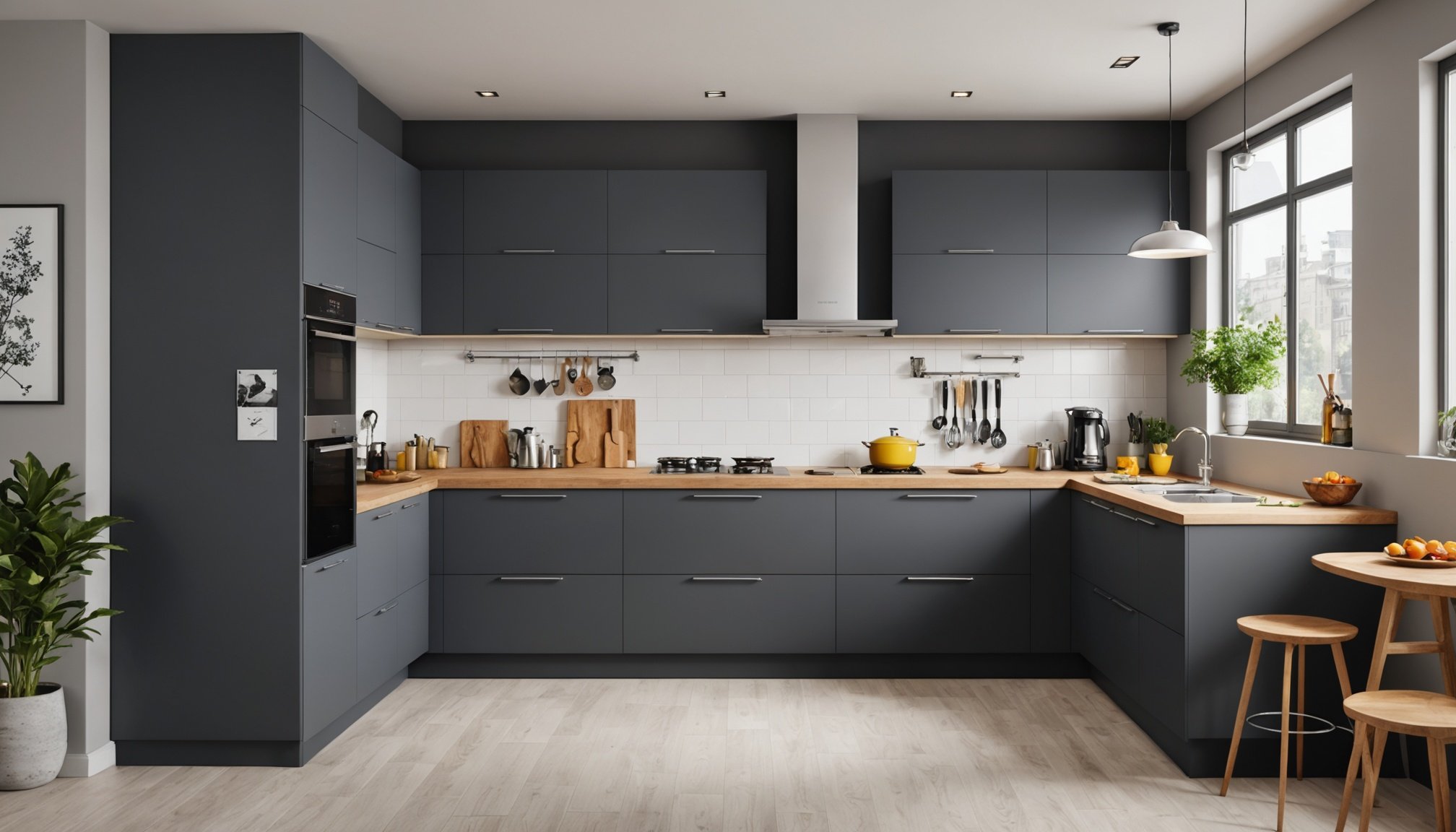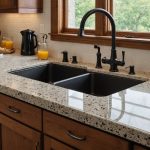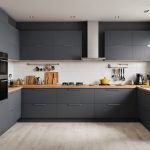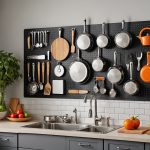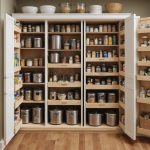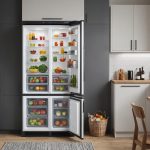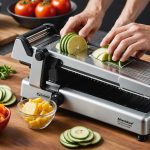Overview of Modular Kitchen Designs
In recent years, modular kitchens have revolutionized the culinary space, offering a sleek and efficient approach to design. At its core, a modular kitchen is a modern style of kitchen furniture that maximizes space using tailor-made units and modules. These units are crafted to fit into varied spaces, aligning with your aesthetic and functional needs.
One of the primary benefits of modular kitchens is their unparalleled space efficiency. With urban homes becoming smaller, these kitchens provide an ideal solution by optimizing every inch for functionality. This leads to clutter-free, organized spaces that enhance your cooking experience.
Also to read : Creative countertop edge designs that minimize spills and enhance style
Customization is another significant advantage. Modular designs allow homeowners to choose from a variety of finishes, materials, and colours, ensuring a kitchen that reflects personal style while meeting practical requirements. Whether your preference leans towards a minimalist concept or a vibrant, eclectic design, modular kitchen concepts have it covered.
Lastly, the ease of assembly intrinsic to modular kitchens cannot be overstated. Unlike traditional kitchen setups, these designs involve minimal installation hassle. The pre-fabricated nature of the units allows for quick and mess-free assembly, making the transition to a new kitchen seamless.
This might interest you : Revamp your family kitchen: the ultimate step-by-step blueprint for embracing a zero-waste lifestyle
In essence, modular kitchens merge beauty with functionality, transforming cooking spaces into efficient, customized sanctuaries.
Current Trends in Modular Kitchen Designs
The latest modular kitchen trends show that open-concept living is transforming modular kitchen layouts. By removing barriers and merging cooking spaces with living areas, homeowners create a flow that enhances both functionality and aesthetics. This trend allows families and guests to interact seamlessly within the home environment.
Incorporating contemporary kitchen styles, many new modular designs feature sleek, clean lines and minimalistic elements that focus on simplicity and efficiency. The use of sophisticated materials, such as high-gloss finishes and earthy tones, adds a modern touch that appeals to the design-conscious homeowner. These materials are not just for show; they are chosen for their durability and ease of maintenance.
The integration of technology is another significant factor in modern design elements. Smart appliances have become a staple in modular kitchens, offering convenience and efficiency. From refrigerators that help manage groceries to ovens that can be controlled remotely, technology plays a crucial role in enhancing the cooking experience.
These advancements in modular kitchen design reflect not just aesthetic changes but also a shift towards creating a more connected and efficient home space. This evolution emphasizes adaptability, making it easy for homeowners to update or modify their kitchens as trends continue to evolve.
Essential Materials for Modular Kitchens
Designing a modular kitchen involves thoughtful material selection, balancing durability, aesthetics, and budget. The right materials reflect personal style while maintaining functionality. Let’s explore the essentials of material choices to consider for a durable kitchen:
Commonly Used Materials
- Plywood: Renowned for its strength, plywood serves as a sturdy base for kitchen cabinets.
- MDF (Medium Density Fibreboard): Cost-effective and smooth, ideal for painted finishes, yet less robust than plywood.
- Marine Ply: Best for areas exposed to moisture, providing high water resistance.
Durability, Cost, and Aesthetics
Plywood wins for durability but comes at a higher cost. MDF is affordable, with a smooth surface for easy finishing, though it falters in humid areas. For aesthetic flair with resilience, laminate and acrylic finishes offer vibrant styles. Remember, the combination can affect both price and longevity, ensuring durability aligns with your expectations.
Material Selection Tips
- Environment: Consider humidity and temperature variations to choose materials that won’t warp or degrade quickly.
- Usage Needs: Frequent cooks may favour stain-resistant, heavy-duty surfaces.
- Personal Aesthetic: Match materials with overall home decor for a cohesive look.
Engaging with a diverse selection of durable kitchen components not only enhances the kitchen’s lifespan but also complements your living space beautifully.
Color Schemes and Aesthetics in Modular Kitchen Design
Selecting the right color schemes for a modular kitchen can significantly influence its atmosphere and functionality. Understanding color psychology helps in designing spaces that are not just visually appealing but also enhance the user’s experience.
Incorporating colors that suit the kitchen’s layout and lighting is crucial. Light shades like whites, creams, and soft pastels often make smaller kitchens feel more spacious and airy. Conversely, darker hues can add depth and warmth to larger areas. Choosing a contrasting palette for cabinets and walls can create a dynamic environment, adding character and style.
Color impact extends beyond aesthetics. Certain shades can alter mood—blues and greens often evoke tranquility and cleanliness, while reds and yellows can energize and stimulate appetite. For a functional and inviting kitchen, it’s essential to balance these colors carefully.
Successful Examples of Color Combinations
- Monochromatic setups: Utilise varying shades of a single color to create a harmonized and sleek look.
- Complementary contrasts: Pair warmer and cooler tones like navy blue with mustard yellow for a vibrant feel.
- Neutral bases with accent pieces: Use whites or greys as the foundation, adding bold colors through accessories or splashbacks.
Choosing the right color palette can transform a kitchen from mundane to a space that’s both practical and inspiring.
Real-life Examples of Modular Kitchen Upgrades
Taking a deep dive into modular kitchen case studies reveals a treasure trove of inspiration for anyone considering a kitchen renovation. One standout example features a cramped, outdated kitchen evolving into a sleek, modern space. The project began with a carefully curated selection of modular elements, replacing clunky cabinetry with streamlined, ready-made units. This not only enhanced aesthetics but significantly improved functionality, allowing efficient use of every nook and cranny.
Transformational Insights
In these kitchen renovation examples, design decisions critically impacted the overall success. Opting for brighter tones and high-quality laminates transformed dark areas into lively, inviting spaces. This decision not only enhanced visual openness but also made the space appear larger. Additionally, integrating modular storage solutions revolutionized organization, providing easy access without compromising style.
Lessons Learned from Modular Implementations
From these inspiring kitchen transformations, several valuable lessons emerge. Firstly, customisation is paramount. Modular elements should be tailored to the household’s specific needs, ensuring practicality. Secondly, investing in flexible design can future-proof the kitchen, making it adaptable to evolving lifestyle demands. Finally, the choice of materials plays a crucial role; they must be durable to withstand daily wear while maintaining aesthetic appeal.
These insights demonstrate that thoughtful modular kitchen upgrades can dramatically enhance both the form and function of the home’s culinary heart.
Tips for Choosing Modular Kitchen Components
Understanding the essentials of modular kitchen component selection can significantly impact the efficiency and aesthetics of your space. Choosing compatible components not only enhances usability but also complements your existing layout. Prioritizing component compatibility ensures that new additions integrate seamlessly with pre-installed elements, avoiding conflict with the existing architecture or appliances.
Key factors to consider include measuring your kitchen space accurately. This step is vital to avoid crowded setups or awkward layouts. Always align your choices with the overall buying guide for kitchens, keeping in mind your kitchen’s specific requirements. Consider functionality as your primary focus, as every component should add to the kitchen’s practical usability.
Balancing functionality with style can enhance your kitchen’s visual appeal. Choose components that align with your aesthetic preferences while maintaining their operational value. Compatibility extends beyond physical fit, considering textures, colours, and finishes that complement your existing design theme.
In terms of appliances, ensure that the selected components support the operation of your current setup. Incorrect choices can lead to functionality issues or require costly adjustments and adaptations.
By methodically selecting modular kitchen components, you make your kitchen not just a room for cooking, but a cohesive, stylish, and efficient space.
Seamless Integration of Upgrades in Existing Layouts
Embarking on kitchen layout upgrades can be both exciting and daunting, particularly when striving for a seamless kitchen design. Integrating new modular kitchen elements into your current setup requires careful planning and strategy. Start by evaluating the existing layout to identify areas where modular components can enhance both aesthetics and functionality.
When planning these upgrades, it’s crucial to maintain the natural flow of your space. The kitchen should remain a hub of efficiency and comfort, where every movement feels natural. To achieve this, focus on the transformation as more than merely adding new items. Consider factors such as work triangle configuration, counter space, and traffic flow to ensure a coherent integration.
Design consultation plays an indispensable role here. Professionals can offer solutions tailored specifically to your kitchen’s unique needs, while addressing any concerns you might have about maintaining harmony within your space. Expert guidance ensures the newly introduced modular features complement the existing architecture without disrupting functionality.
Some strategies to consider include:
- Choosing modular pieces that blend with existing finishes.
- Utilizing storage solutions that optimize available space.
- Incorporating smart technology for added convenience.
By prioritizing these considerations, you will create a seamless design that elevates your kitchen’s functionality and visual appeal.
Visual Aids and Inspiration
In the realm of modular kitchen design, visual aids serve as indispensable tools. They provide a tangible understanding of design concepts that can often be abstract and complex. As you embark on a kitchen remodel, leveraging inspirational imagery can be a game-changer in refining your vision.
Platforms like Pinterest and Houzz are excellent resources for sourcing design inspiration. These platforms offer extensive galleries of modular kitchen visuals allowing users to explore diverse styles, colour schemes, and layouts. By reviewing these images, you can identify elements you love and ideas you hadn’t considered, ensuring your kitchen reflects your unique taste.
When it comes to planning and decision-making, visual aids play a pivotal role. They help you communicate your ideas more effectively with designers or contractors, minimizing misunderstandings. By having a collection of images illustrating your preferences for visual design elements, you can seamlessly translate abstract concepts into concrete plans.
Moreover, visual aids can aid in assessing how different components of modular kitchens interact, such as cabinetry styles or appliance placements. This strategic use of visuals ensures that your remodel is cohesive and functional, enhancing both aesthetics and usability in your new kitchen space.
